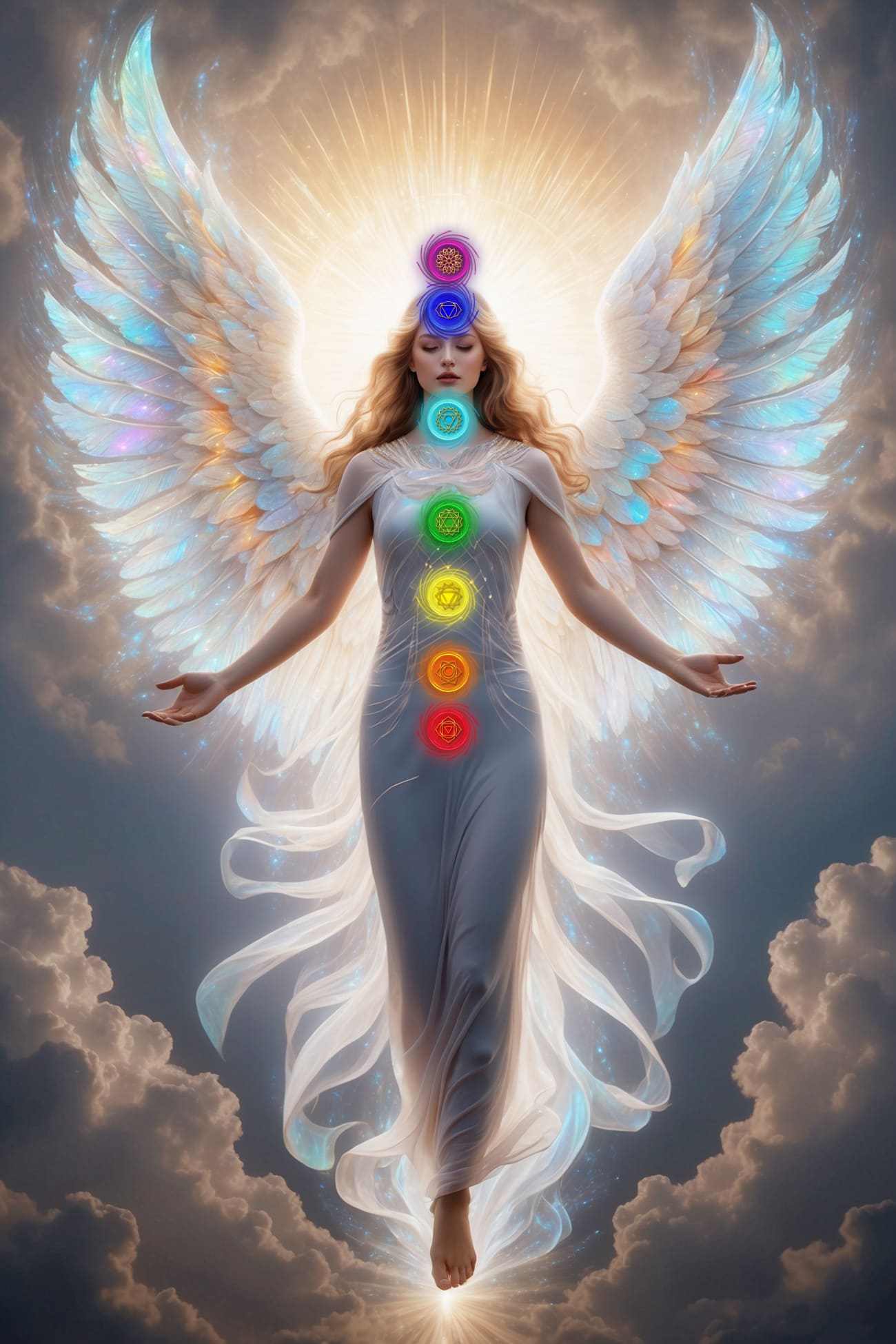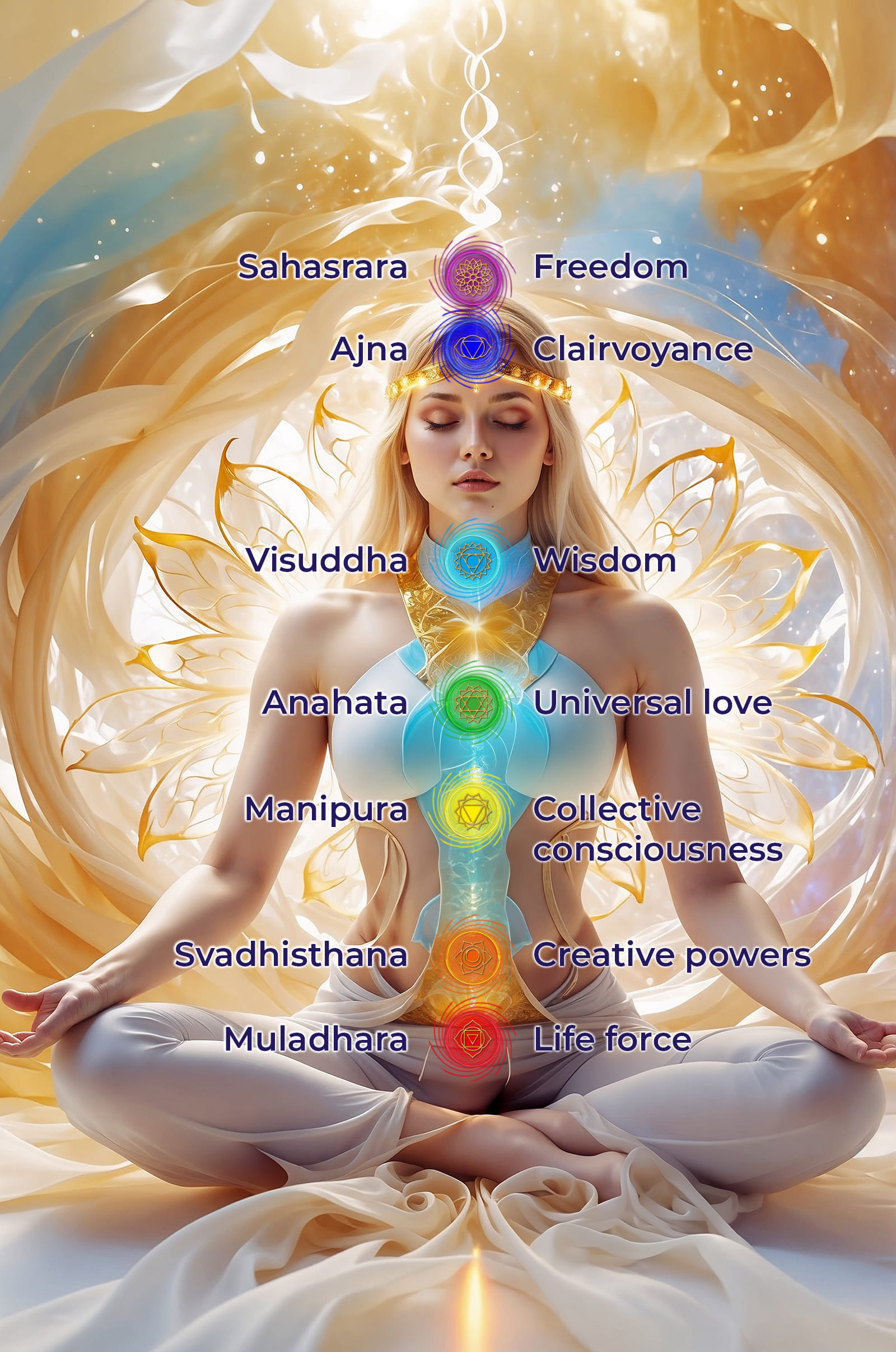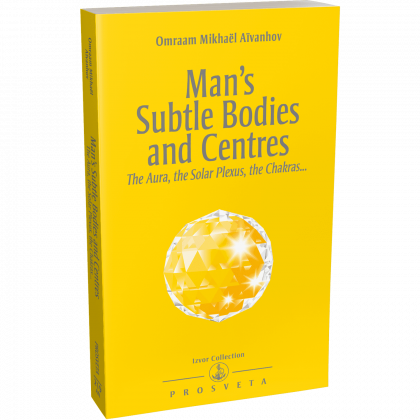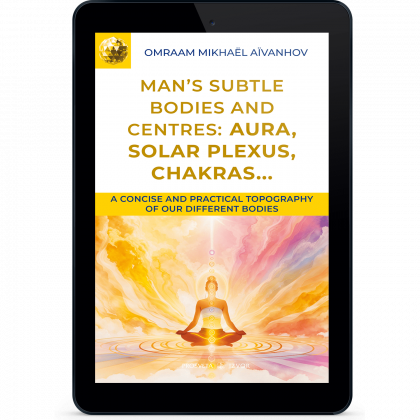The Chakra System
Spiritual centers located in the etheric body
'Where does the tradition of attributing wings to angels come from? If you see a painting or sculpture of a winged being you don’t need to be told to know that it represents an angel. But why do we give them wings and what do the wings mean? Do angels really have wings?
No, of course not, but the tradition stems from a very ancient science of man and his subtle centres. The great initiates of old knew that human beings have two very powerful centres in the back, at shoulder-level. These centres are situated in the etheric and astral bodies and, when they are correctly developed, they create a kind of whirlwind which gives the person the freedom to move through space at will…
For several thousand years now, Indian initiates have taught that beyond the limits of the physical body, in his etheric and astral bodies, man has a series of subtle force centres lying along the axis of the spine.
These centres are called chakras (a Sanskrit word meaning ‘wheel’) or lotuses. In ascending order we have:
- At the base of the spine: Muladhara, the four-petalled lotus;
- Immediately above the sexual organs: Svadhisthana, the six-petalled lotus;
- In the region of the navel and solar plexus: Manipura, the ten-petalled lotus;
- Over the heart: Anahata, the twelve-petalled lotus;
- At the front of the throat: Vishuddha, the sixteen-petalled lotus;
- Between the eyebrows: Ajna, which has two large petals, each divided into forty-eight smaller petals, giving ninety-six in all;
- On the top of the head: Sahasrara, the thousand-petalled lotus. In point of fact Sahasrara has 960 outer petals and a central corolla of twelve petals, which gives 972 petals in all. The twelve petals of the corolla are golden yellow and the outer ring of 960 petals is purple, and the two rings spin in opposite directions.
There is no visible sign of these spiritual centres in the physical body because they are situated in the etheric body. The organs of the physical body, however, are influenced by them. The chakras all differ from each other in colour and the number of their petals, and this means that the frequency and intensity of their vibrations are different, the divinities that dwell in them are different, and above all, on awaking, each bestows different powers and virtues on a human being.
- Muladhara bestows life force;
- Svadhisthana, creative powers;
- Manipura, collective consciousness;
- Anahata, universal love;
- Vishuddha, wisdom;
- Ajna, clairvoyance;
- and Sahasrara, omnipotence and total freedom.
It is said that a divinity or Shakti dwells in each chakra. Their names (in ascending order), are: Dakini, Rakini, Lakini, Kakini, Shakini and Hakini.
When Kundalini has completed her ascent through the chakras, she has reached her goal and is united with Shiva, the masculine principle.
As the union of the masculine and feminine principles, the head and tail of the serpent, is consummated, it produces a blinding light and henceforth the yogi has reached the summit, he is totally free.'
'Where does the tradition of attributing wings to angels come from? If you see a painting or sculpture of a winged being you don’t need to be told to know that it represents an angel. But why do we give them wings and what do the wings mean? Do angels really have wings?
No, of course not, but the tradition stems from a very ancient science of man and his subtle centres. The great initiates of old knew that human beings have two very powerful centres in the back, at shoulder-level. These centres are situated in the etheric and astral bodies and, when they are correctly developed, they create a kind of whirlwind which gives the person the freedom to move through space at will…
For several thousand years now, Indian initiates have taught that beyond the limits of the physical body, in his etheric and astral bodies, man has a series of subtle force centres lying along the axis of the spine.
These centres are called chakras (a Sanskrit word meaning ‘wheel’) or lotuses. In ascending order we have:
- At the base of the spine: Muladhara, the four-petalled lotus;
- Immediately above the sexual organs: Svadhisthana, the six-petalled lotus;
- In the region of the navel and solar plexus: Manipura, the ten-petalled lotus;
- Over the heart: Anahata, the twelve-petalled lotus;
- At the front of the throat: Vishuddha, the sixteen-petalled lotus;
- Between the eyebrows: Ajna, which has two large petals, each divided into forty-eight smaller petals, giving ninety-six in all;
- On the top of the head: Sahasrara, the thousand-petalled lotus. In point of fact Sahasrara has 960 outer petals and a central corolla of twelve petals, which gives 972 petals in all. The twelve petals of the corolla are golden yellow and the outer ring of 960 petals is purple, and the two rings spin in opposite directions.
There is no visible sign of these spiritual centres in the physical body because they are situated in the etheric body. The organs of the physical body, however, are influenced by them. The chakras all differ from each other in colour and the number of their petals, and this means that the frequency and intensity of their vibrations are different, the divinities that dwell in them are different, and above all, on awaking, each bestows different powers and virtues on a human being.
- Muladhara bestows life force;
- Svadhisthana, creative powers;
- Manipura, collective consciousness;
- Anahata, universal love;
- Vishuddha, wisdom;
- Ajna, clairvoyance;
- and Sahasrara, omnipotence and total freedom.
It is said that a divinity or Shakti dwells in each chakra. Their names (in ascending order), are: Dakini, Rakini, Lakini, Kakini, Shakini and Hakini.
When Kundalini has completed her ascent through the chakras, she has reached her goal and is united with Shiva, the masculine principle.
As the union of the masculine and feminine principles, the head and tail of the serpent, is consummated, it produces a blinding light and henceforth the yogi has reached the summit, he is totally free.'
Text taken from the book "Man's Subtle Bodies and Centres - The Aura, the Solar Plexus, the Chakras...", chap. 6 "The Chakras".




